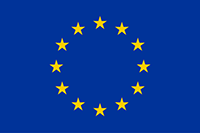For more information about the legal framework and ethical standards, consult our section on research involving minors on our guidelines for good research.
Webinar: Biobanking with children
With this webinar, you will learn about:
- An outline of the regulatory background
- Ethical issues specific to biobanking from children
- Data sharing and children’s rights
- The need to change biobanking processes & attitudes in all players involved in biobanking with children.
Publication: Paediatric biobanking for health: The ethical, legal, and societal landscape
This paper explores the ELSI challenges in paediatric biobanking with its inescapable shift regarding the child’s engagement as a participant throughout time. Moreover, it highlights the need to provide empowerment and capability settings to support researchers and biobankers, and backs this with practical examples.
Biobanking Research is About Me – Raising Awareness and Citizen Science
Biobanking in the modern world involves data and sample-based research. It presupposes the construction of an inclusive extended scientific community to work as a team between all the players. It asks for a new social pact for science. Without citizens’ understanding and engagement, biobanking does not work. Patients, citizens, families, and new generations are at the heart of biobanking, making it possible for research to benefit all of us.
Resources
Biobanking Experts Develop a Workshop on Genetics for Young Patients
Activity led by the Patient Engagement in Research Department devoted to ensuring the involvement of patients and caregivers in health and innovation projects at Sant Joan de Déu Barcelona Children’s Hospital.
EPTRI Toolkit for the Involvement of Patients in Basic Research
A toolkit to educate paediatric patients on their involvement in basic research in the context of the EPTRI project granted by the European Commission. The toolkit includes a video explaining translational research and a repository of curated resources focused on: basic research, animal testing, sample donations, etc.
What is a Biobank? (Italian)
Video produced by the Telethon Foundation explaining what a biobank is.
From Assent to Consent
Biobanking with children challenges our practice. It requires us to recognize the child as an active participant, with all the rights that we confer on adults. We need to rethink the issues of assent and consent, and move towards dynamic and participatory models of regulation and interpretation. It not only represents a tremendous change of pace but also a significant challenge in terms of the engagement of a participant, the minor, who progressively but often separately acquires decision-making competence and legal capacity. So, who is primarily responsible for proposing to the minor that they might participate in research biobanking? What tools are available to inform and increase the child’s understanding? Who assesses the child’s capacity to understand and assent?
Resources
Rare Disease Biobanks and Informed Consent: Video Interview (Italian)
In this video people working in Rare Disease Biobanks are being interviewed and are explaining the informed consent structure and its importance.
Children-friendly poster about the GDPR
Children-friendly information about consent and data sharing under the GDPR
Multi-Actor Engagement
Biobanking requires the multidimensional action of a system based on transparency, inclusion, participation, and reciprocal engagement. Each actor, from the family to the clinicians, to the Research Ethics Committees and the researchers, etc., is mutually necessary for the development, sustainability, and fairness of both biobanking and data-based science. This is especially critical with children, since they are individuals in evolution with a situated vulnerability in transition: paediatric (research) biobanking practices need to collect samples before diseases develop and maintain a prospective follow-up. Such a process would entail the involvement and the conscious commitment of all the players over time. This implies a training shift based on innovative empowerment models that engage all the actors.
Resources
Innovative framing paediatric biobanking for early drug development in pediatric oncology
TEARDRoP is working on sustainable biobanking in a pediatric oncological clinical setting that can only work when embedded in routine practices.
RD-Connect: an Integrated Platform for Rare Disease Research
An integrated platform connecting databases, registries, biobanks, and clinical bioinformatics for rare disease research.
Acknowledgements
Sant Joan de Déu
Kids Barcelona is the Young Person’s Advisory Group (YPAG) at Sant Joan de Déu Barcelona Children’s Hospital. Formed by patients living with different conditions and a few healthy young people, the Scientific Council provides advice to health research and innovation projects. Their involvement ensures that the projects will be patient-centric and include the perspective of the young patients from the conception of the projects until the communication of outcomes phase.
Among the training activities performed in the capacity-building program, a practical session was performed in the biobank to explain to them the importance of biological sample donation, the use of the samples for diagnosis and research, and the process of consenting and storing the biological samples.
Contact: Begonya Nafria
TNGB – Telethon Network of Genetic Biobanks
TNGB – Telethon Network of Genetic Biobanks originates as a research project funded by Fondazione Telethon Italy and is a network of 11 Italian Rare Disease Biobanks.
Foundation Telethon
Foundation Telethon is a non-profit organisation recognised by the Italian Ministry of Education, Universities and Research, founded in 1990 in response to calls by people suffering from rare diseases.
TEARDRoP – Department of Pediatric Hematology, Oncology and Stem Cell Transplantation, UZ Ghent, Belgium
TEARDRoP – Oncology consortium was founded to bridge the gap between basic and clinical research in the field of pediatric oncology
Contact: Liselot Mus





